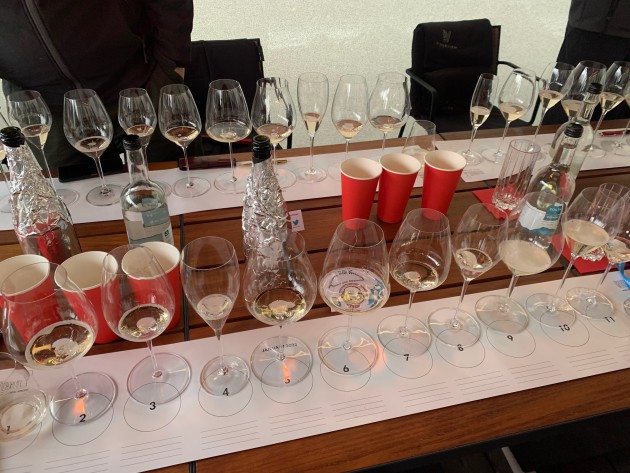
Finding the ‘perfect’ English sparkling wine glass
Designing the best glass with which to serve a particular style of wine has long been the mission for the Riedel family, which has built a glass-blowing empire out of pinpointing the precise dimensions for higher end drinks receptacles. And having a bespoke vessel to deliver the best expression of your wine arguably suggests you have ‘arrived’, confirming a seat at the top table. A position English sparkling wine took a step closer to last week.
The event was an English Sparkling Wine Sensory Workshop, conducted by Maximillian Riedel at Ridgeview Wine Estate, bringing together Sussex winemakers and their wines, following on from similar tastings in Kent and Hampshire.
“The quest is to find the perfect sparkling wine glass,” said Riedel, introducing a flight of 12 varying glasses, also including the obvious lame duck of a traditionally shaped flute, all primed with the first of four blind-tasted Sussex sparkling wines.
The tasting panel, which included prominent Sussex winemakers, plus independent palates such as indie merchant Henry Butler and Harpers own editor, were tasked with voting out – on a show of hands – the three least successful glasses in the flight, before repeating the same exercise with the remaining nine and then six glasses, but each flight with a different (blind) sparkling wine. No conferring was allowed.
Riedel explained: “This is the way we develop new glasses, never on a computer… the glass can be a loudspeaker, it is your stage.”
It was a fascinating exercise, exposing quite how much the shape of the glass affects perception of everything about the wine, from mousse and aroma to texture, weight and length, by way of emphasis or otherwise of the acidity and even tannins.
What was most eye-opening though, is that the three widish-bowled, tulip-shaped glasses that made it to the final round, were the same three chosen by the panels in not just Kent and Hampshire, but also at a carbon-copy event in Tasmania, plus one that Riedel organised for Dom Perignon in Champagne.
Faced with a final show of hands for a personal favourite among the final three glasses, the numbers were crunched and the top glass revealed, being a Veloce Riesling glass, with Riedel’s benchmark Champagne glass coming in a little way behind (although, interestingly, the favourite among Tasmanian sparkling winemakers). A second Riesling glass came third, trailing its rival.
Moreover, the votes throughout delivered a pretty consistent result, regardless of which English sparkling wine had been in the glass – later revealed as Ridgeview Cavendish NV, Bolney Classic Cuvée NV, Rathfinny Classic Cuvée 2018 and then Oxney Organic NV.
Riedel explained that this was not a surprise, as the Riesling glass was ideally shaped to show low tannin, high acidity wines, while concentrating delicate aromas and allowing the more ‘vinous’ nature (in these cases) of the palate to be expressed. From this point, a dedicated English sparkling wine glass can now be fashioned.
For Sussex – and English sparkling winemakers more generally – this was a significant event, according to Ridgeview’s host Mardi Roberts. She suggested, “it sends another important message that English sparkling wine has arrived”.




